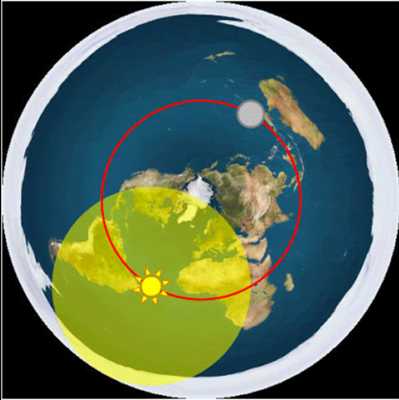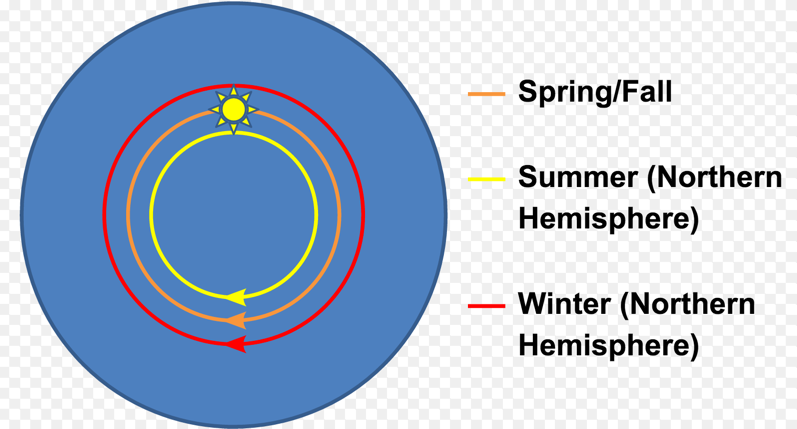ThePottersClay (John) - Absolute Proof that Mercury is Close and we Don't Orbit the Sun Flat Earth - does not understand angular size so fails high school geometry
Dear ThePotterClay,
The only thing this video is "Absolute Proof" of, is that YOU failed geometry class. Your video presentation is wrong just from a simple mathematically standpoint, let alone from flat verses globe Earth.
1. Fact check = You FAIL
The size an object appears to be in the sky does not depend on the shape of the platform the observer is standing on.
2. Fact check = You FAIL
The Earth's orbital speed around the Milky Way galactic center has zero to do with how large the planet Mercury, or actually any planet, looks in the sky. That's because we are all traveling at the same speed in the same direction, so only relative motion of the planets around the Sun count for consideration.
Your following statement is 100% WRONG...
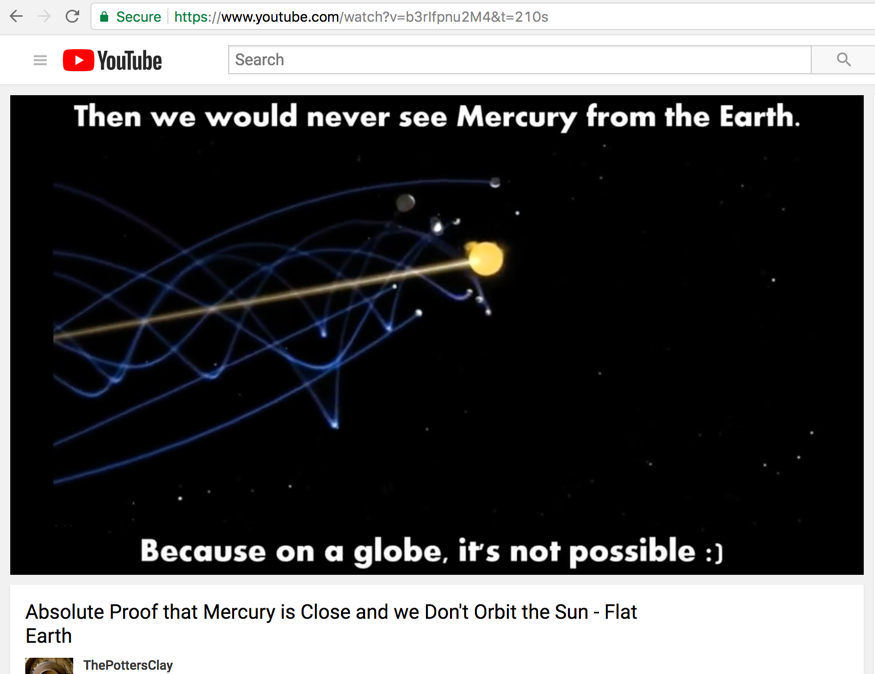
- - - - - - - - - - - - - - - - - - - - - - - - - - - - - - - - - - - - - - - - - - - - - - - - - - - - - - - - - - - - - - - - - - - - - - - - - - - - -
3. You do not understand angular size and how that relates to the distance of an object (ie., the planet Mercury).
Fact:
Angular size: is the apparent diameter of a planet, celestial object, or an airplane in the sky measured by the angle which it subtends at the point of observation.
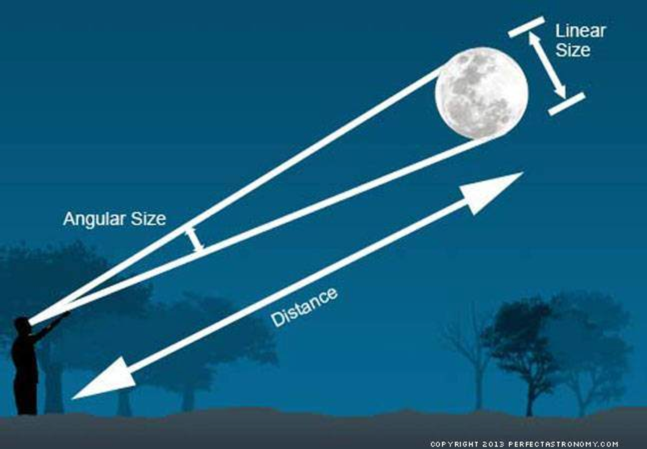
- - -
In the example below, both the red and green balls appear to be the SAME angular size to an observer, yet obviously their actual real size is not the same...
Only knowing angle theta θ is not enough information to detemine an objects size or distance.
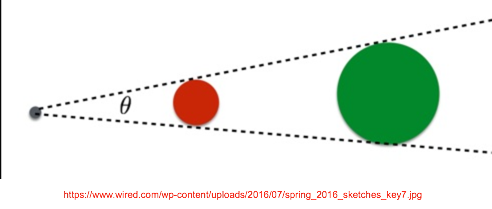
We know these kids are not as tall as the Leaning Tower of Pisa in Italy, even though they look the same...

- - -
4. As shown in the angular size calculator diagram below, the dimensions of angle, distance and object diameter are related as:
g real size = 2r*tan(a/2)
r distance = g/(2*tan(a/2))
a angular diameter or appearent size, parallax = 2*arctan(g/(2r))
NOT THE LINEAR CALCULATIONS THAT YOU SHOW IN YOUR VIDEO.
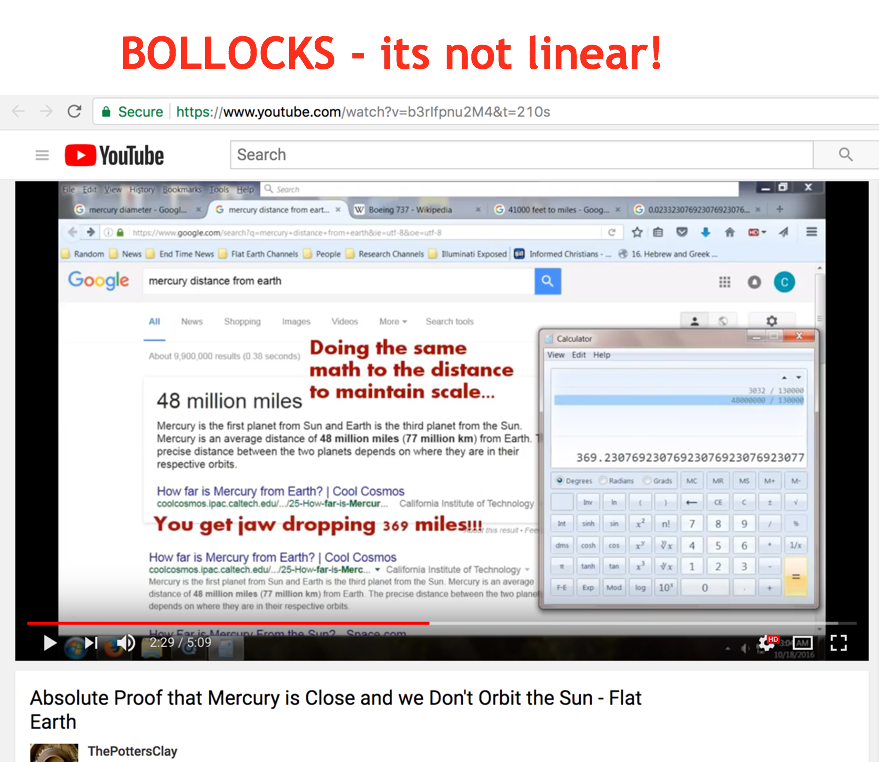
- - -
5. Here is now to correctly calculate the angular size of the planet Mercury...
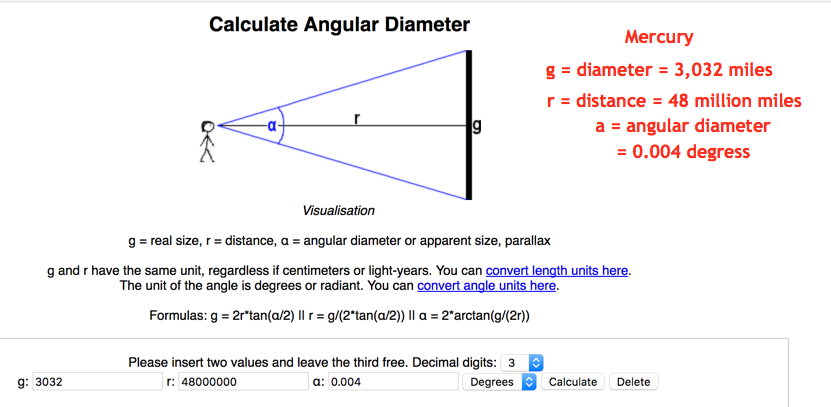
which is 0.186 / 0.004 or 46.5 times smaller than the Boeing 737
- - -
6. So now lets discuss your atrocious math, concerning your airplane example.
Your statement: "A Boeing 737 is rougly 120-feet long and flys at around 7-miles."
g = 120 feet
r = 7 miles = 36,960 feet
calculated angular diameter = 0.186 degrees
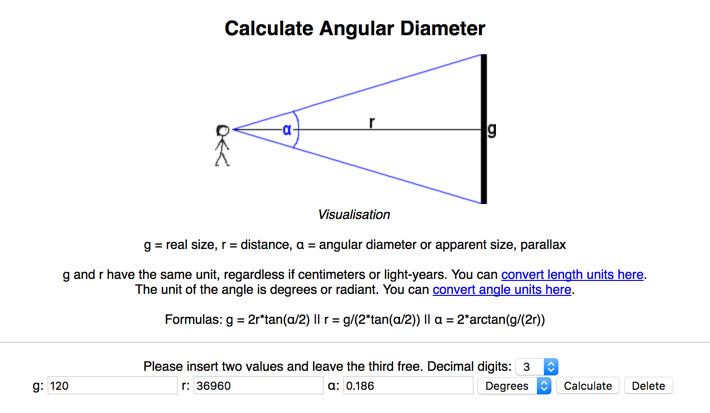
Active link = https://rechneronline.de/sehwinkel/angular-diameter.php
- - -
...which would appear in the sky to be the same angular size as a 31-foot airplane at a height of 15,000 feet
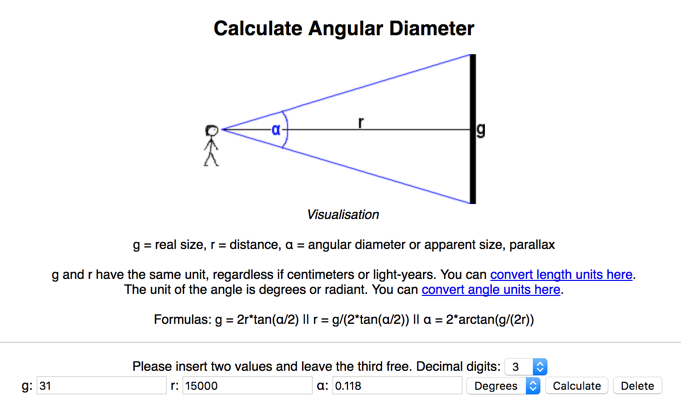
g = 31 feet
r = 15,000 feet
calculated angular diameter = 0.118 degrees
But that Boeing 737 (120-feet length) flying at altitude 7-miles will look just a large as a (31-foot length) plane flying only at 15,000-feet.
So do you get that? The angular size of an object in the sky is not a linear calculation!
- - - - - - - - - - - - - - - - - - - - - - - - - - - - - - - - - - - - - - - - - - - - - - - - - - - - - - - - - - - - - - - - - - - - - - - - - - - - -
Next issue:
7. Please explain using your flat Earth model why planets Mercury and Venus are only seen in the (early evening & early morning) sky, and always near the Sun, while all the other planets don't have that same restriction.
Your following representation is a fantasy, and 100% wrong...
Can't show top-down Day vs Night, and East West horizon on the same diagram - at the same time. Those are entirely TWO different configurations.
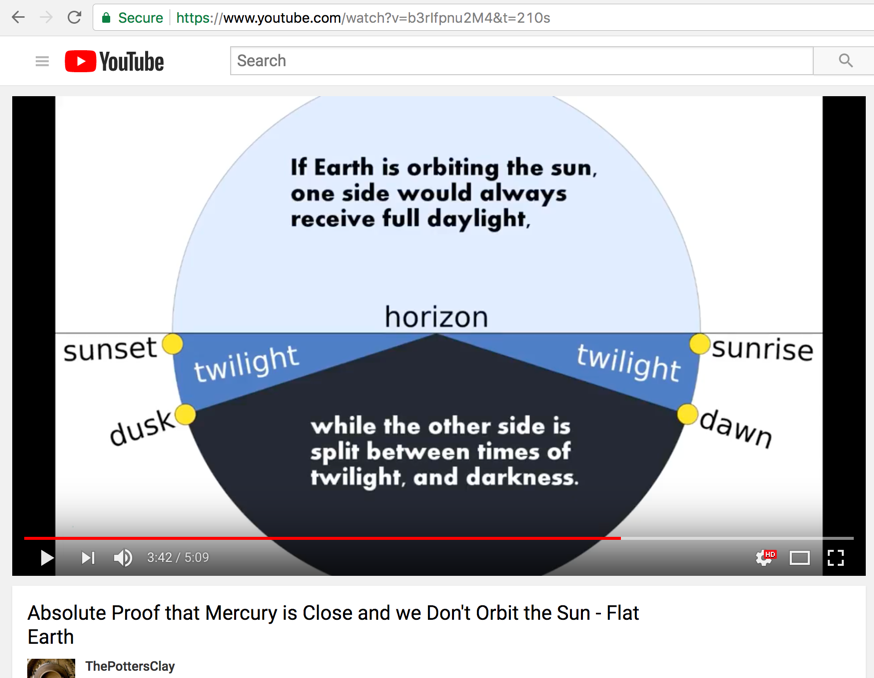
- - -
For the horizon view, you should show something like this...
Mercury as an evening star sets after the Sun.
Mercury as a morning star rises before the Sun
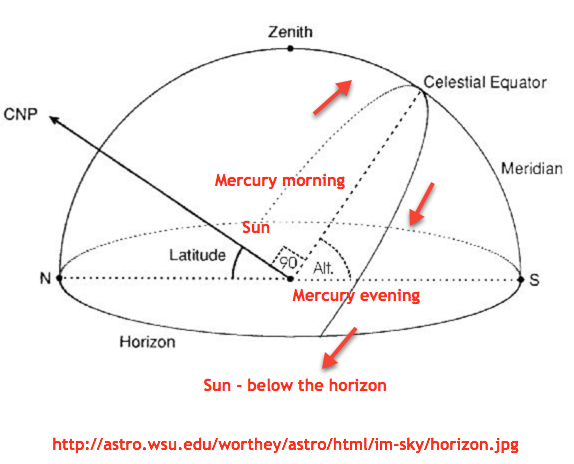
- - -
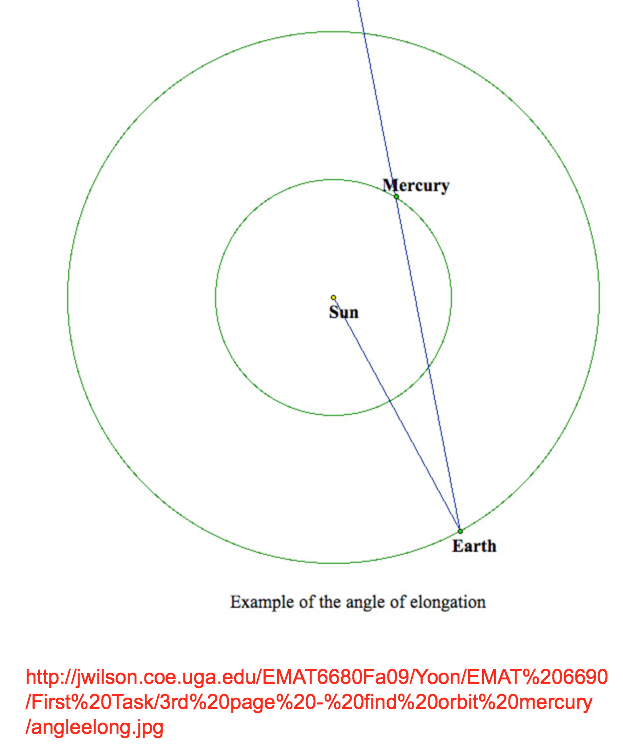
- - -
Mercury never gets more than 28 degrees ahead or behind the Sun on its ecliptic path.
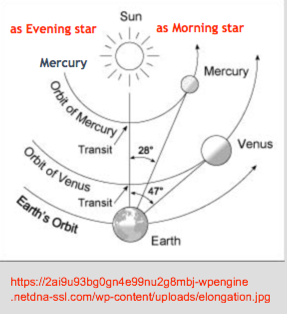
- - -
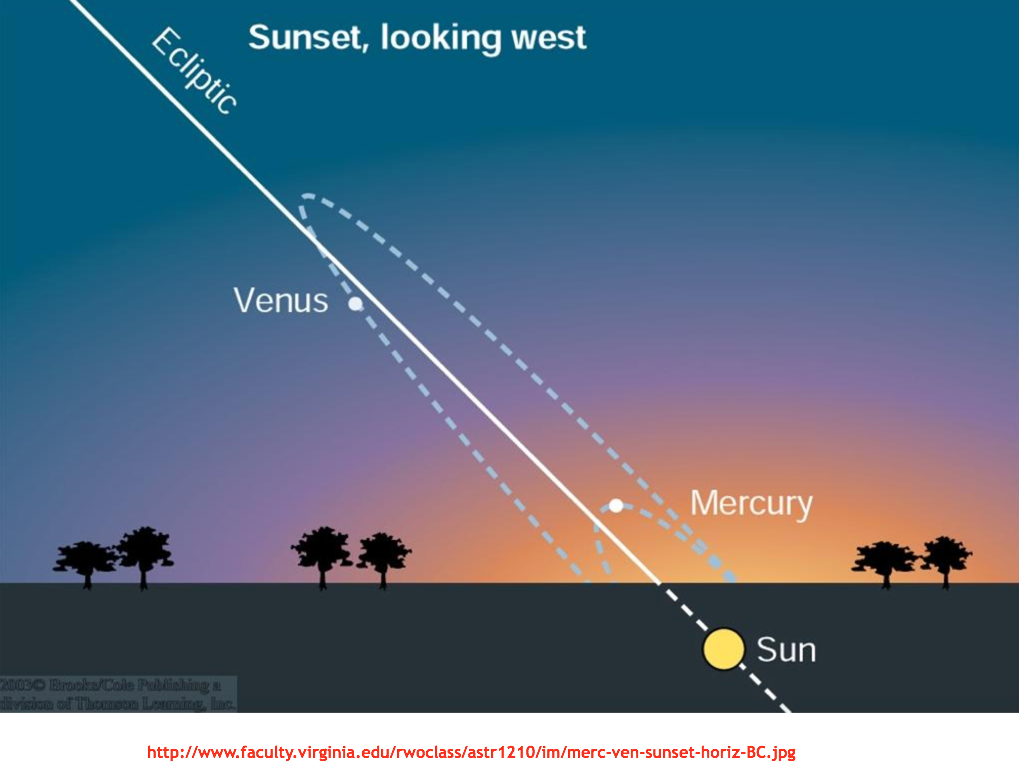
- - - - - - - - - -
Conclusion: Any 10th grade high school student who passed geometry mathematics class knows that your analysis of Mercury is wrong. Ask someone.
Discussion at - https://www.youtube.com/channel/UC7ipUKERU0tzYFxALJBli4A/discussion
Video at - https://www.youtube.com/watch?v=b3rIfpnu2M4&t=210s
kind regards, JonahTheScientist



